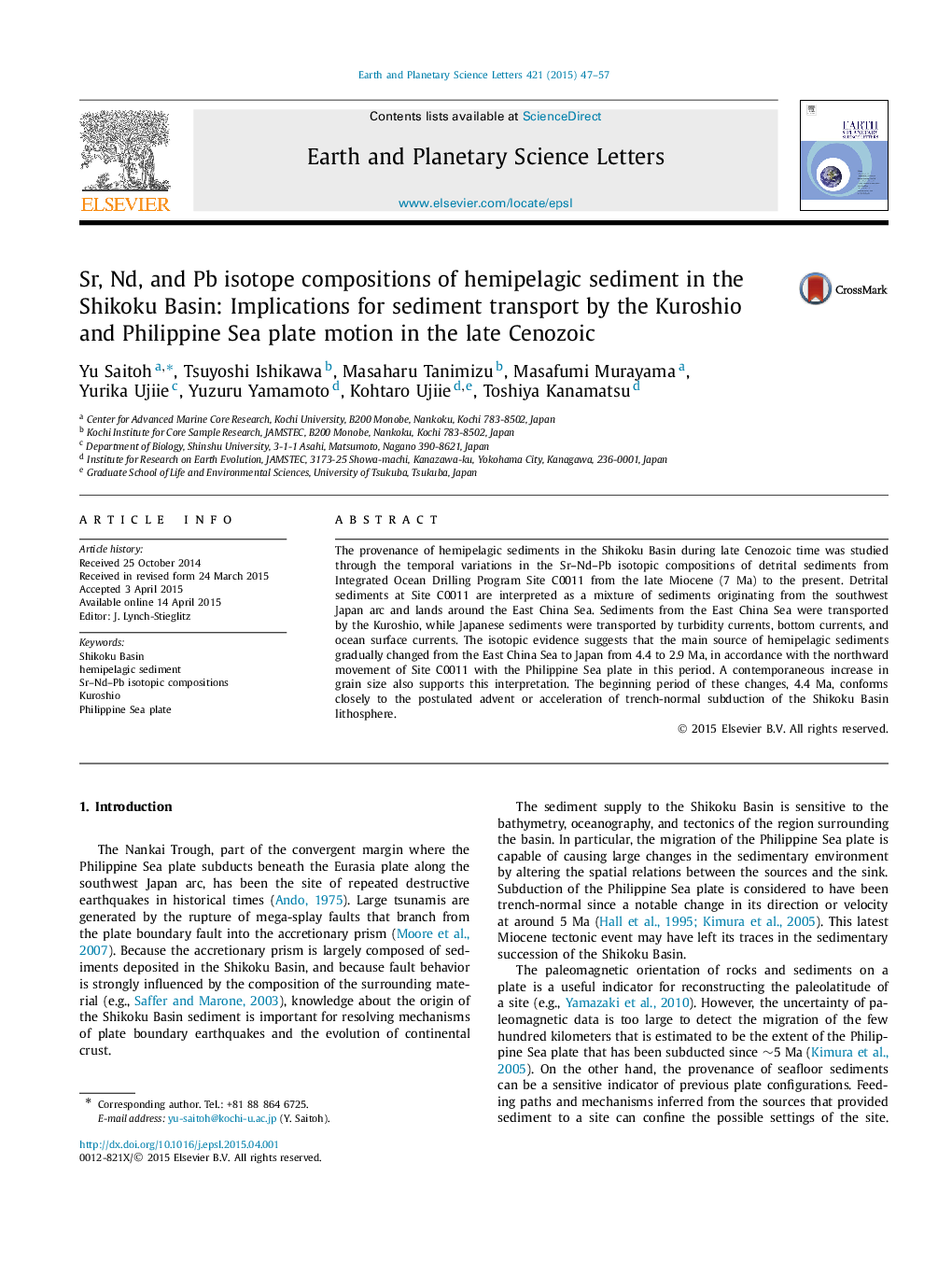| Article ID | Journal | Published Year | Pages | File Type |
|---|---|---|---|---|
| 6428305 | Earth and Planetary Science Letters | 2015 | 11 Pages |
â¢We show Sr-Nd-Pb isotope ratios of detrital sediment in the Shikoku Basin.â¢Sediment source was hinterlands of the East China Sea and Japan since 7 Ma.â¢The Kuroshio transported sediment from the East China Sea to the Shikoku Basin.â¢Japanese contribution in sediment supply increased from 4.4 to 2.9 Ma.â¢The Philippine Sea plate motion best explains the increased sediment contribution of Japan.
The provenance of hemipelagic sediments in the Shikoku Basin during late Cenozoic time was studied through the temporal variations in the Sr-Nd-Pb isotopic compositions of detrital sediments from Integrated Ocean Drilling Program Site C0011 from the late Miocene (7 Ma) to the present. Detrital sediments at Site C0011 are interpreted as a mixture of sediments originating from the southwest Japan arc and lands around the East China Sea. Sediments from the East China Sea were transported by the Kuroshio, while Japanese sediments were transported by turbidity currents, bottom currents, and ocean surface currents. The isotopic evidence suggests that the main source of hemipelagic sediments gradually changed from the East China Sea to Japan from 4.4 to 2.9 Ma, in accordance with the northward movement of Site C0011 with the Philippine Sea plate in this period. A contemporaneous increase in grain size also supports this interpretation. The beginning period of these changes, 4.4 Ma, conforms closely to the postulated advent or acceleration of trench-normal subduction of the Shikoku Basin lithosphere.
